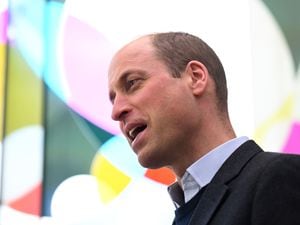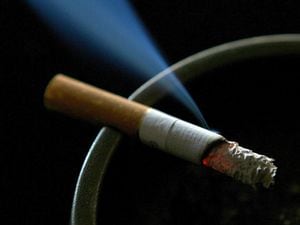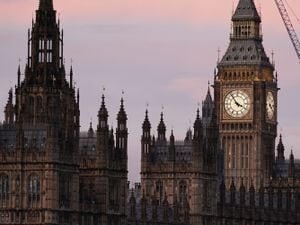Push R below one and keep it there to save Christmas – scientists
Models predict how the spread of coronavirus may impact the loosening of social distancing over the festive period.
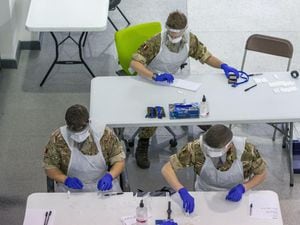
The reproduction rate of coronavirus must stay below one for “some time” to allow families to gather at Christmas, Government scientists have warned.
Documents show the Scientific Pandemic Influenza Group on Modelling (SPI-M), which reports to the Scientific Advisory Committee for Emergencies (Sage), believe infections will rise at the same rate as before if the three-tier system is brought back in on December 2.
The team warned that failing to stop the virus taking off again could have an impact on families getting together to celebrate Christmas.
It comes as Sage said on Friday the reproduction number for coronavirus, the R value, is dropping across the UK and is potentially below one in some areas.
In a document dated October 28, SPI-M set out modelling scenarios of what may happen in the future.
It said: “None of these scenarios are palatable.
“Nevertheless, until such a time that more effective treatments are available or a significant proportion of the population have been immunised, no other scenarios are possible.”
In one scenario where prevalence is “low and controlled”, and where NHS Test and Trace “can play a big role in containing outbreaks”, there is scope for a loosening of social distancing rules over Christmas for a “limited time”, the experts said.
For this to happen, “rapid and decisive interventions” must push R well below one and “maintain that for some time”.
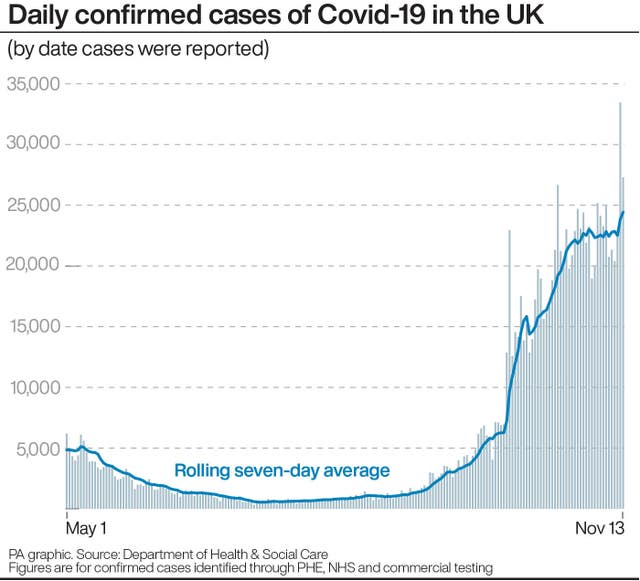
However, the scientists noted that the only time this has happened so far was during the March/April lockdown.
In a different “high and controlled” cases scenario, which experts believe the UK is in at the moment but with potential for cases to drop, there is “little to no scope for loosening of social distancing rules over Christmas”.
This scenario is when infection rates are high for several months and too high for NHS Test and Trace to be effective.
A third scenario predicts a much worse outcome but is when Government interventions “are not sufficient to stop epidemic growth”, SPI-M said.
In a note of optimism in a document dated November 4, SPI-M said the current lockdown restrictions are likely to push R under one if they are “well-adhered to”.
But SPI-M said stricter controls will then be needed than the three-tier system that was in place before lockdown.
It said: “The longer-term outlook depends on both the nature of non-pharmaceutical interventions that are implemented in England after December 2 and policies over the festive period.
“If England returns to the same application of the tiering system in place before November 5, then transmission will return to the same rate of increase as today.”
In a passage looking at how well the three-tier system worked before the current lockdown, SPI-M said there was a “clear effect” on infection rates from strict Tier 3 interventions but “much less from Tiers 1 and 2”.
Despite the bleak warnings, SPI-M said, if a vaccination programme can start when cases are low, social distancing rules can end much sooner.
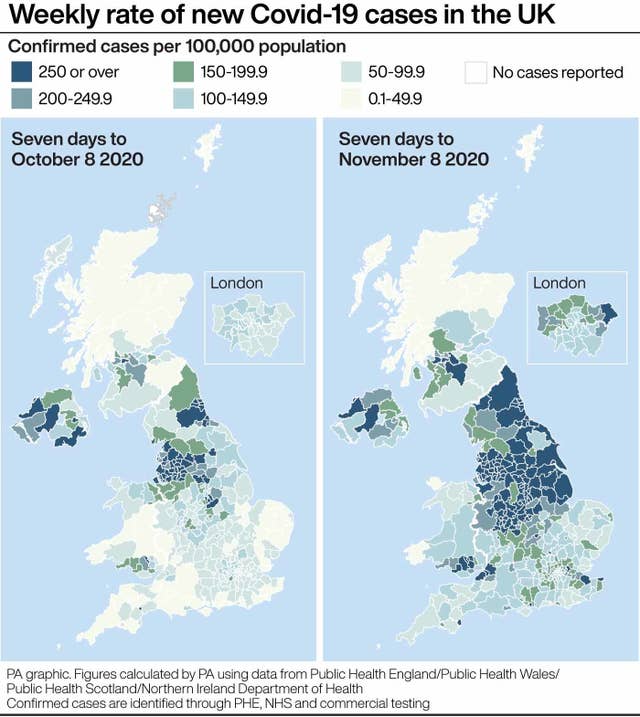
It comes as Sage said on Friday the R value for the UK has fallen to 1-1.2.
Experts believe the R value is already below one in some places, particularly in parts of Wales and potentially parts of Scotland and the north west of England.
It is hoped that R will drop in more places next week or the week after, as people remain under lockdown restrictions.
Experts looking at case data believe the growth rate is flattening, with the number of new cases per day across the UK thought to be between 55,000 and 81,000.
This takes into account cases in care homes and hospitals as well as in the community.

Younger age groups are seeing a fall in cases, though levels are still going up in older age groups, who are at most risk from Covid-19.
The doubling time for the epidemic is thought to be between 28 and 63 days across the UK.
It comes as new figures from the Office for National Statistics (ONS) on Friday show there were an estimated 654,000 people in private households in England who had Covid-19 between October 31 and November 6.
The figures are a rise from 618,700 people in the period October 25 to 31, though ONS said daily infections had stabilised at about 50,000.
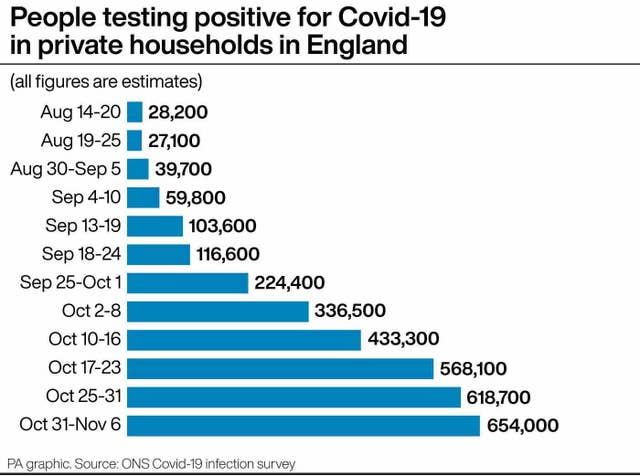
The ONS said that while the infection rate has increased in recent weeks, “the rate of increase is slower than previous weeks”.
Separate figures from the Zoe app study run by King’s College London found that the number of daily new Covid-19 cases is now declining across the UK.
Experts behind that study put the R in the North West at 0.8, and the UK R value at 0.9.
In a statement on Friday, Sage also said it was confident the epidemic has continued to grow in England over recent weeks.
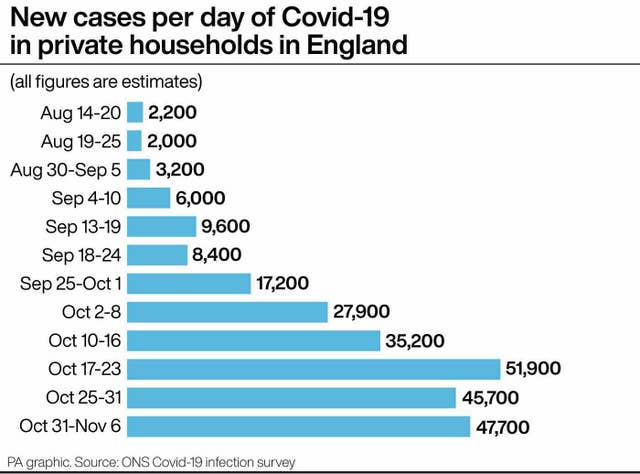
It said: “Although there is some evidence that the rate of growth in some parts of the country may be slowing, levels of disease are very high in these areas; significant levels of healthcare demand and mortality will persist until R is reduced to and remains well below one for an extended period of time.”
Elsewhere, the Government said a further 376 people had died within 28 days of testing positive for Covid-19 as of Friday.
As of 9am on Friday, there have also been a further 27,301 lab-confirmed cases of coronavirus in the UK, down from 33,470 on Thursday.
Other Sage documents released on Friday said the rising prevalence of Covid-19 cases “was first visible around the time that schools reopened”.
They added: “While this may be indicative of a potential role for school opening, causation, including the extent to which transmission is occurring in schools, is unproven and difficult to establish.”


